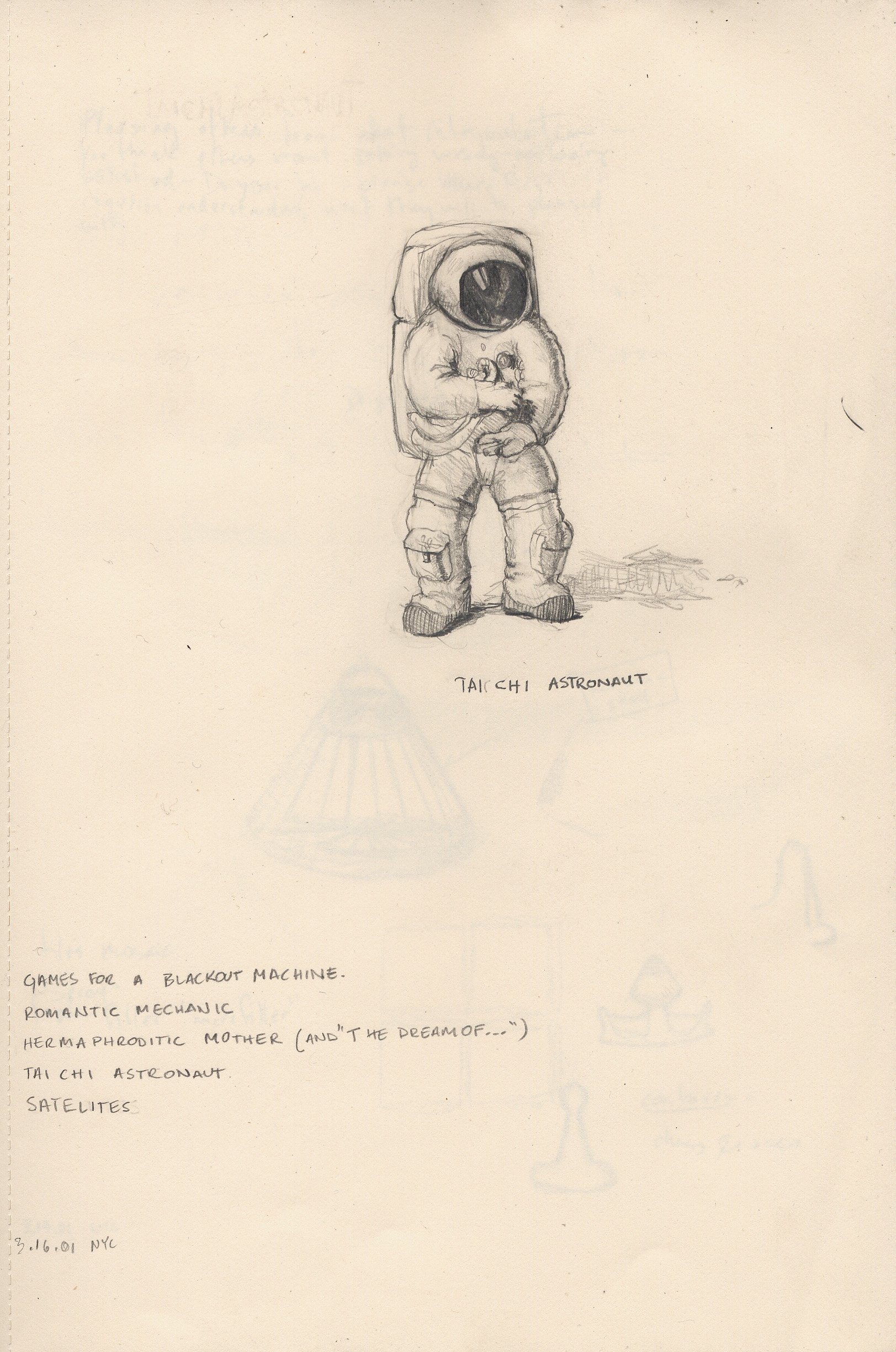Tai Chi Astronaut
A wearable cardboard astronaut suit to perform moon walks or do tai chi, 2001, mixed media, video stills, and drawing.
-
“Stepping out into the void 120 miles above the pacific” – Life Science Library
There is something strange about the appearance of an astronaut free-floating in space with an umbilical chord tracing back to the capsule: “Stepping out into the void 120 miles above the Pacific.” The most expeditious effort to physically experience the outer layers of our planet may be inconsequential. The understanding of our physicality in space is in cases only a means to operate with surgical precision a particular goal; placing in geocentric orbit the Hubble telescope for example. Nevertheless, this physicality, the relationship with what is outside the reigns of our border, the atmosphere, is something only a few of us (at least perhaps in this generation) will ever experience, for the most of us, it will be through association alone. Outer space, the region beyond the “sensible atmosphere,” is always around us. A border we understand sometimes epistemologically by appreciating a blue sky, the moon, the stars, the airplane, the architectural backdrop of our cities. The astronaut’s pressure suit, space suit, is the last skin, protective layer, and armor, before the vacuum of space engulfs the body completely. The treatment is gentle, the movement abstract and languid, something the Tai Chi Master appears to understands.
The history of space suits has been a battle with the problems of mobility and constraint. Keeping enough oxygen in the blood stream by artificiality constructing internal atmospheric pressures enclosed to what basically constitutes a balloon. The body is placed within the suit, sealed in; sophisticated joints thrive towards allowing movement corresponding to the actions we take for granted here on the surface of the planet with its typical gravity. The Tai Chi Astronaut came as a response and query to this relationship we have with a handicap of motion, a library of coded images in quicktime or access cable as to how an astronaut works and leisure’s in space.
From childhood on, the myth created around the Apollo mission has personally sustained momentum. Not so much because of the moon, but because a person stood, with both feet on alien dirt. Technology has brought about this advent. In less than sixty years, biplanes, the air warriors of WWI would morph into the forms we see today on the front pages of the New York Times: Rocket boosters, Space Shuttles, International Space Stations.
Technology’s job is to comprehends the type of capsules, membranes, skins that we need in order to sustain this direction of research, and of course colonization. The failures of this ambitious system break down the force in which science has replaced philosophical inquiry with self-proclaimed certainties. Ironically, the Apollo space suits are withering away in their own storage facilities, in the Museum of Natural History. The chemistry of the materials used is causing a reaction that’s not acid free.





